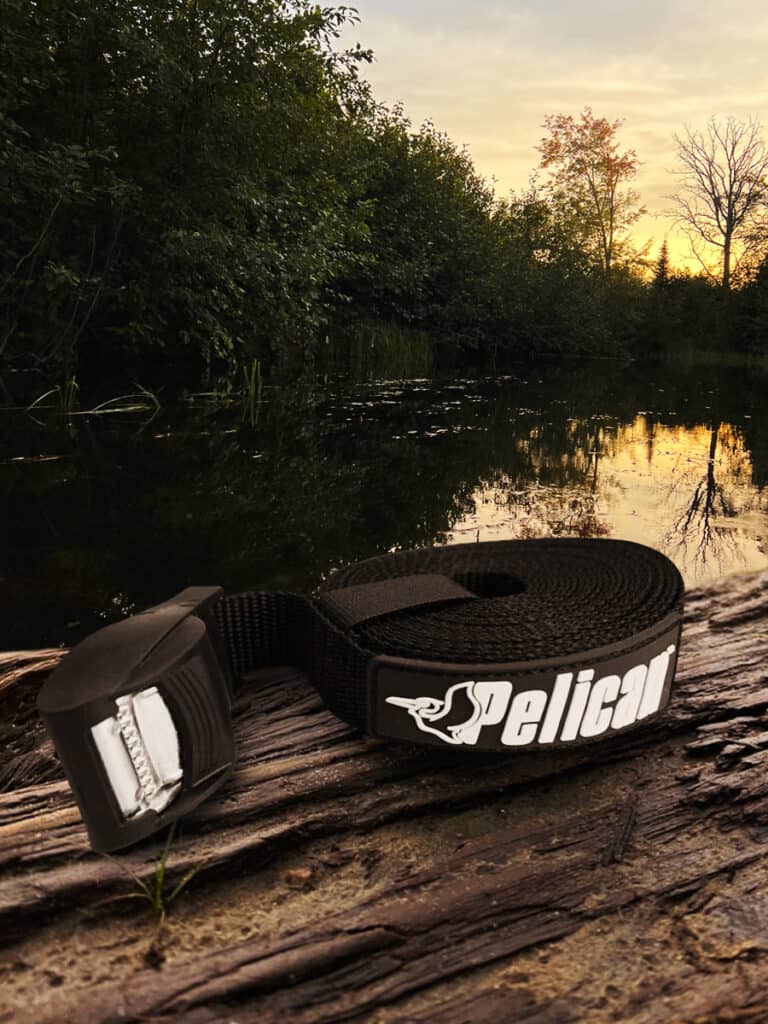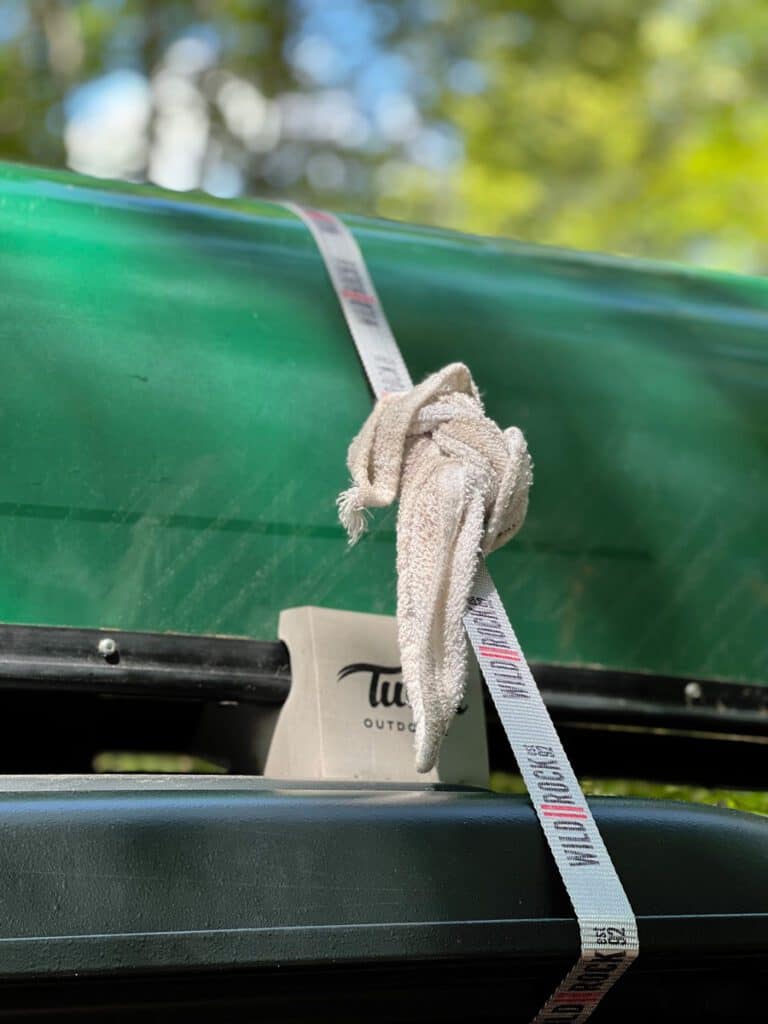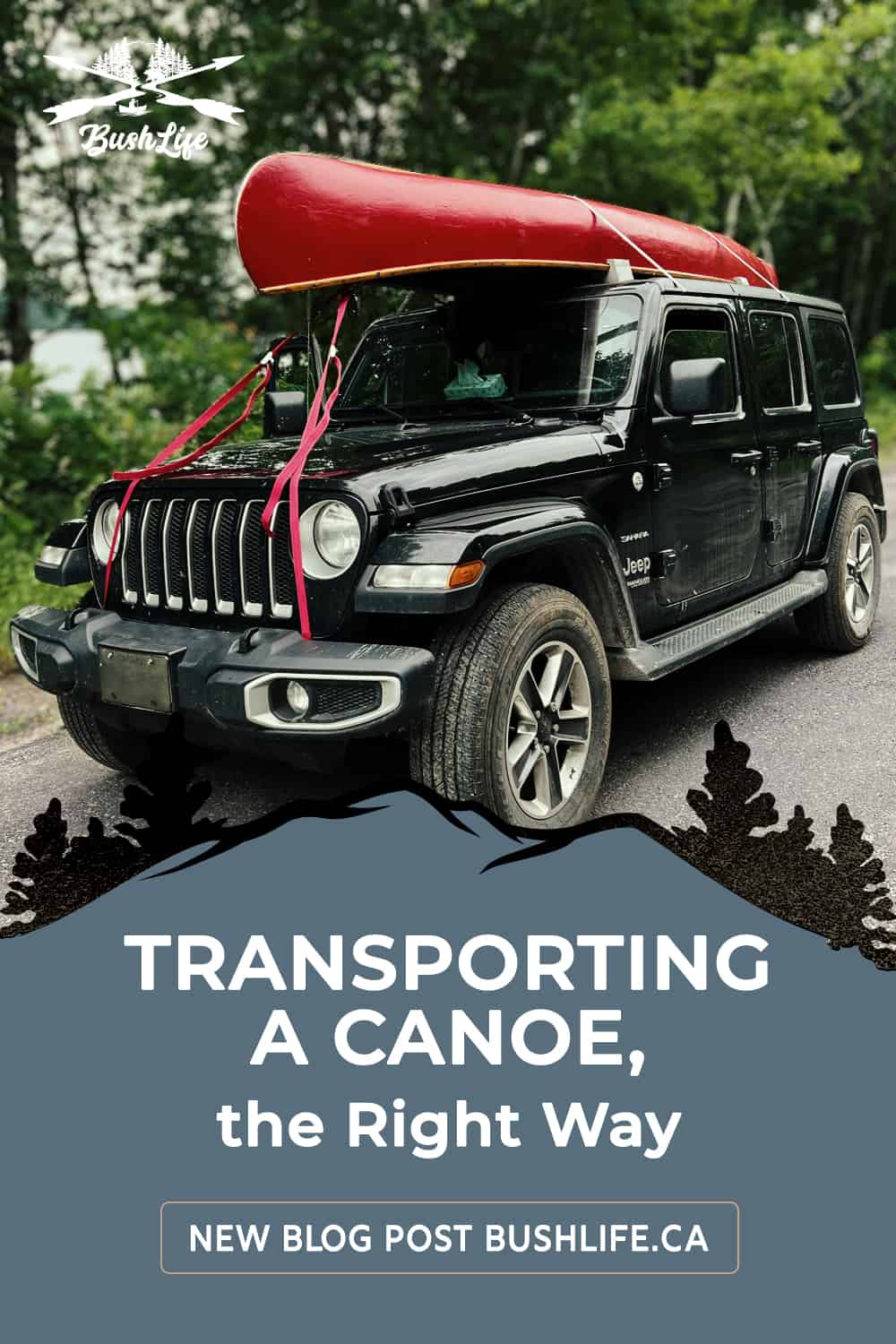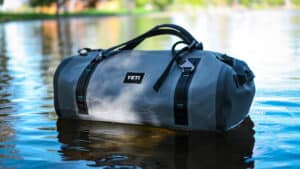There are telltale signs when someone or some family is on vacation. Generally, it’s a canoe strapped to the roof of the car and enough junk in the trunk or back seat that the driver can’t look back:) Transporting a canoe can be an art, and there are proper ways to ensure your precious boat doesn’t turn into a plane. Or roadkill, for that matter. Let’s dive into how to strap a canoe to the car properly, and it’s crucial as many people do it wrong. Especially someone that may be new to canoeing.
Discloure: Posts may contain affiliate links. Purchases made through our links result in a small commission to us at no charge to you. We only recommend products that meet our brand standards based on testing and first hand use by our authors.
Type of Vehicle for Transporting a Canoe
Off the bat, this is the easy part, so let’s get through it right away. The vehicle DOES NOT matter. Unless your roof is all glass, then you have a problem. But you can always take up tennis or golf 😂 Very few vehicles have an exorbitant amount of glass as a roof. In this case, talk to your dealer about mounting a roof rack.
If you don’t believe me that the vehicle doesn’t matter, sit in the parking lot of any shop that rents canoes. You’ll see all kinds of cars pull up, big and small. The shop folks come out, toss a canoe on the roof and strap it down in minutes.
Roof racks make things pretty easy as they hold the canoe off the vehicle’s roof and prevent damage to the roof. You may want to pad the racks themselves to protect the canoe. However, roof racks are not a requirement by any means.
Further Reading: Introduction to Canoeing: A Guide for the New Canoeist
Required Gear to Transport a Canoe
Canoe Blocks
If you don’t have a roof rack, all you need are some foam blocks. Canoe blocks have cutouts to slip onto the gunwales of the canoe. The canoe is flipped upside down and placed gently and directly onto the vehicle’s roof. The canoe carrier blocks provide a cushion between the canoe and the roof, protecting both.
My vehicle of choice is a Jeep Wrangler that has a plastic roof. It also lacks roof racks, yet transporting a canoe has NEVER been an issue, thanks to these foam canoe blocks. You’ll need 4 in total to secure a canoe to a roof.
Cross Straps

Now that we’ve figured out how to get the canoe on the roof, it’s time to strap it down. For this, we use cam locking straps like the Pelican’s cam locking straps, which are a prime example of a suitable cross strap.
Without them, you better know your knots, as you’ll be tying down a canoe with rope, which is infinitely more complicated. Applying the cam strap is easy – just follow these steps:
- With the car doors open, toss the strap over the canoe and feed it back into the car.
- Inside the vehicle, feed the strap into the cam. Pull the running end of the strap tight, which will be held tight thanks to the cam. It’s similar to a ratchet strap but simpler as it lacks a ratchet mechanism. The excess is tied off, so it’s out of the way.
- Repeat the above steps for the back. You now have 2 solid straps holding down your canoe.
Rags
Important Tip: In all seriousness, you’ll never see me transporting a canoe without rags. The outer parts of the cam straps can buffet in the wind and create a lot of noise. It can drone so loud you won’t have a conversation with the person next to you as you won’t hear them. At least, that’s been my experience every single time.
The rags will dampen the sound, but if you tie them correctly, it will eliminate it. See the picture below for exactly how I tie mine. All it does is prevent the straps from being able to vibrate rapidly, and it works very well!

If it’s raining, you’ll find water coming into your car. While not excessive, it’s enough to get you wet and uncomfortable. To help catch the rain, tie the rags inside the vehicle, close to where the straps come in.
Simple math says to carry a minimum of 4 rags for sound. Eight, if it’s raining that day.
Further Reading: Canoe Paddle Sizing: A Beginner’s Guide
Don’t Forget to Use Bow and Stern V-Straps!
We’ve all seen plenty of canoes transported with just the two straps above. That doesn’t sit well with me, and the security of bow and stern straps is a step I would never skip. For this, we use canoe v-straps.

How To Use a Canoe V-Strap
- The bottom of the V attaches to the handle of the canoe (see below).
- The two ends attach to the vehicle. In the front of the car, it’s wherever you can find a solid spot to attach. I slip mine between the bumper and can pick up a hole in the frame on both sides of the Jeep. Same at the rear, I typically use the safety chain attachment points of the hitch receiver.
- Tighten the cams. The excess strapping can be tied up and out of the way. Don’t skip this step, as the straps will fly around and keep whacking your car if you don’t tie off the slack.
V-straps seem to be harder to come across than the cam locking straps in the previous section. If you find some, grab yourself a pair while you can.
Can I Tie Down a Cedar Strip Canoe Using V-Straps?
Relax, cedar strip canoes are much stronger than you think! We were fortunate enough to finally buy a cedar strip recently without blowing out the bank. We managed to purchase a beautiful vintage Peterborough Canoe. The photo at the very top of this post was when we picked it up. You’ll see it many times in the blog, maybe even a restoration of it one day.
The challenge with cedar strips is sometimes finding an attachment point. Many have a simple metal ring attachment at the bow or stern. Mine, in particular, doesn’t – it has a hole instead. It also doesn’t have a suitable handle to attach a v-strap to. A simple solution is to feed a rope with a loop through the hole and tie a knot on both sides. These knots essentially sandwich the hole and provide a loop to attach your v-straps (see below).

So, How Fast Can You Drive with a Canoe on the Roof?
Always leaning towards the cautious end of things, I tend to get up to 90 km/h an hour, and if all looks good and solid, I’ll go faster from there. Even the old cedar strip canoe got up to 110 km/h when passing a truck, but that’s as far as I was willing to go that day until the canoe and I got to know each other a little better:)
If you check online forums, as this question comes up a lot, you’ll find countless people writing about going 70 or even 80 mp/h. The math on 80 mp/h is 128 km/h, which exceeds our legal speed limits. In other words, the canoe does not slow you down.
Transporting a canoe (or having anything else strapped to a car) is serious business. You’ll need to make your judgment calls when it comes to speed. Regardless of the speed, do yourself a favour and check all your tie-down straps every time you pull over. If anything works itself loose, you’ll be happy you did!
Further Reading: Waterproof Duffel Bag: Is The Startling Cost Really Worth It?
Transporting a Canoe – This is it, Folks!
Transporting a canoe is serious. But it doesn’t have to be scary or difficult. You become empowered once you realize how easy it is to tie down a canoe (which is a boat) to almost any car. Knowing you can paddle any waterbody you can drive to is no less than a pathway to freedom in the wilderness.
Please consider sharing if you found this post helpful. Thank you!!
Bookmark this post on Pinterest for future reference!







